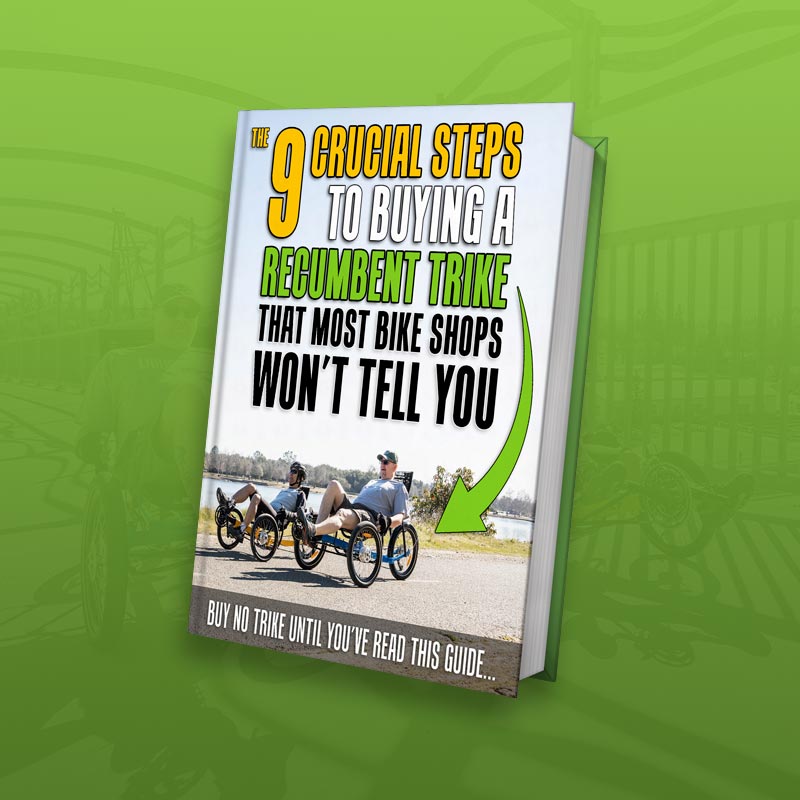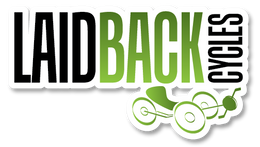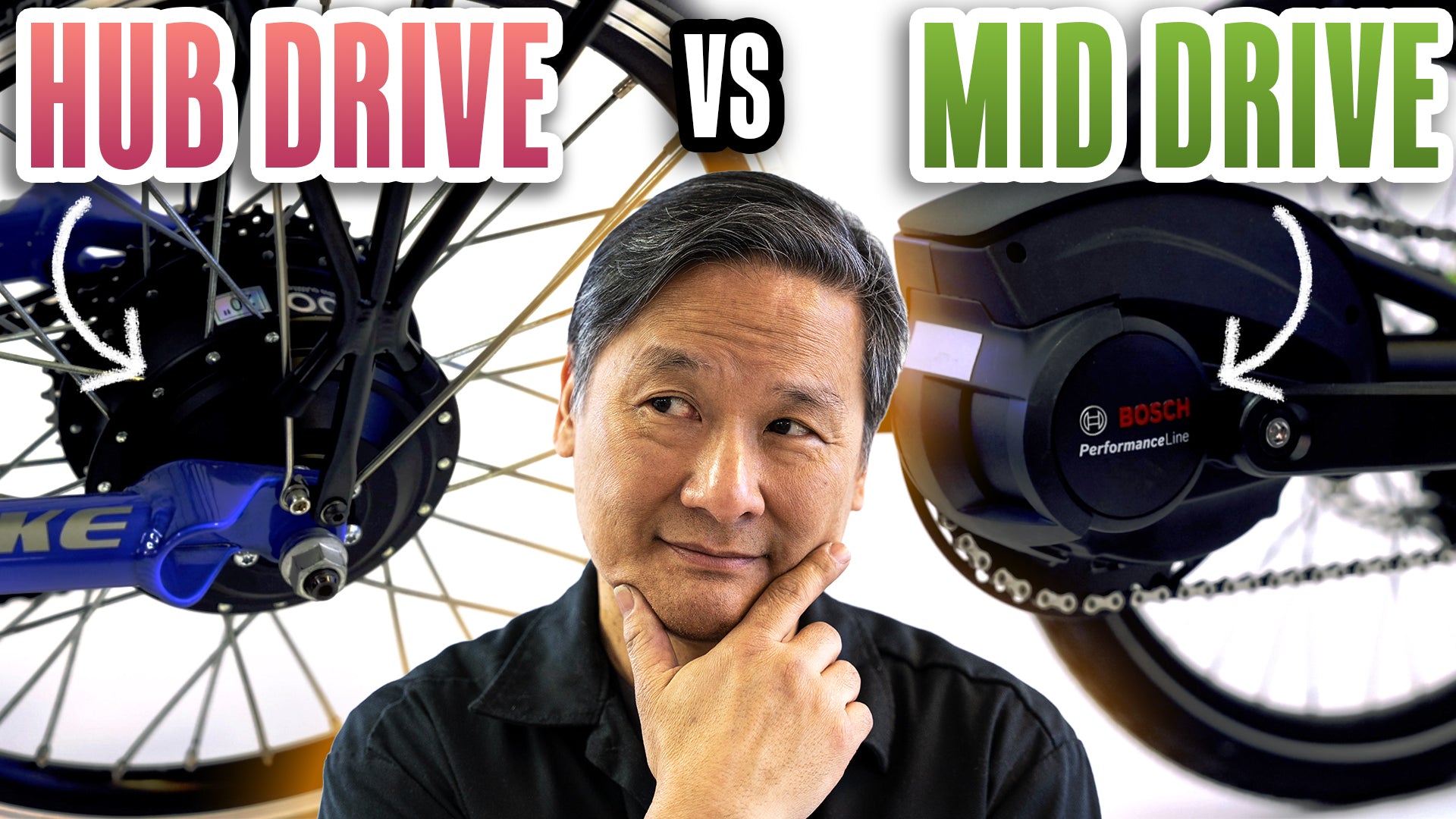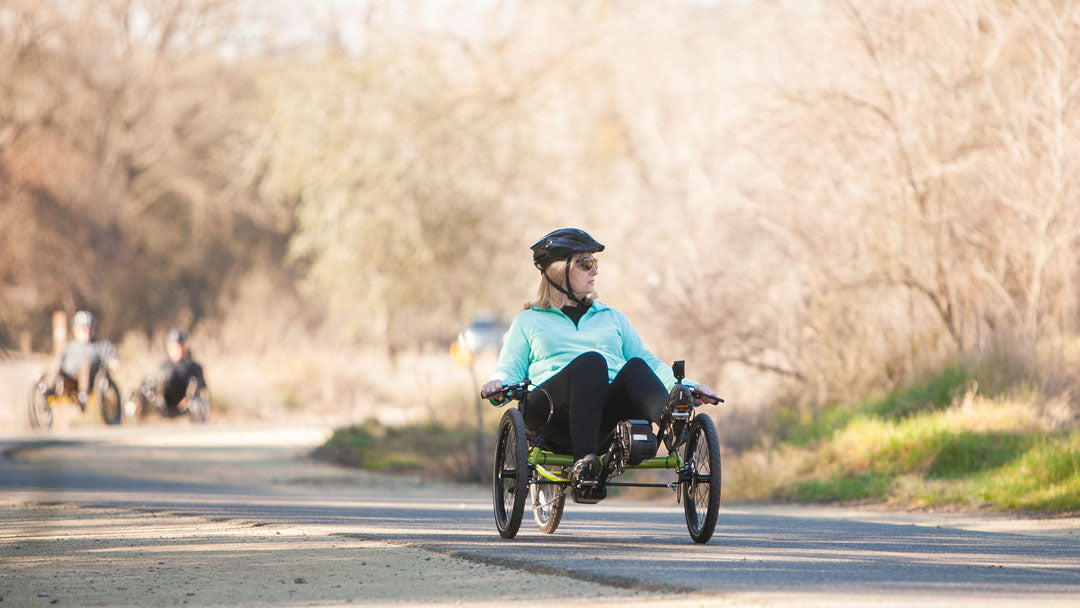If you’re in the market for a new recumbent adult trike and are leaning towards an e-trike, you basically have two options:
- The electric motor throttle or
- The pedal assist
These options determine how the power is activated on your e-trike. So how do you know which one is best for you? Here we break it all down to help you decide.
Electric Motor Throttle
Think of the electric motor throttle as a mini motorcycle. You use a grip shift on the throttle to engage the motor, so your power kicks in. While this is a common type of throttle, there are also triggers and boost buttons available. Regardless of the type of throttle, you have the choice to do all the work, some of the work, or go full power for an effortless ride.
You control the amount of power desired with various e-trikes offering different levels of modulation. Modulation is important as it refers to how much control you have over increasing the power. Good modulation is gradual, while poor modulation is quick and comes in sudden bursts. Here are the pros and cons of electric motor throttles:
Pros
- Many riders find the throttle is faster with more responsive power
- Best for country roads or high traffic areas
- Allows you to enjoy the ride completely motorized to spare your legs if you tire easily or have mobility issues
Cons
- Poor modulation can be tricky in traffic
- Less efficient battery since the motor does most of the work
- Fixed gearing can’t be adjusted to suit the conditions of where you ride
- Can’t really contend with combined trails or roads where you need to constantly switch from cruising to hill climbing
- Requires concentration and puts pressure on your hands to control the throttle
- Some trails do not allow electric motor throttle use
Why Choose Electric Motor Throttle?
If you have limited mobility or leg strength or suffer from medical conditions that make it difficult to pedal, this is a good option for you.
Pedal Assist
Pedal assist, also known as electric assist, provides a boost of power when pedaling. Although some provide a “switch” for the power, all models require pedaling. Depending on the power levels of these e-trikes, you can improve your pedaling speed between 20% to 300%. Whether you want to get where you’re going fast without breaking a sweat, want to really accelerate to tackle the steepest hills on the trail or are looking for a gentle “push” pedal assist offers what you need.
Bosch motors are designed to respond to your needs so you can enjoy minimal pedaling resistance and reach accelerated speeds even at low cadences. Many systems, such as the eCAT use multi-sensor technology and fast information processing. As a result, you enjoy intuitive interaction that allows you to enjoy the type of ride you need when you need it. Here are the pros and cons of the pedal assist e-trike:
Pros
- Much more intuitive compared to throttle e-trikes
- Suited for all types of riding, whether it is getting around town, easy trails or more challenging routes with steep hills
- Less pressure on your hands, focusing on pedaling instead of operating the throttle
- Mid-drive design provides better balance for the e-trike
- Excellent for climbing challenging hills because both power and pedaling are fed from the same area, so efforts are more balanced, and wider speeds are reached compared to electric motor throttles
- You get more mileage because some of the energy is shared through pedaling
- More acceptable to ride on national park trails
Cons
- Not as good for riding in traffic as you don’t achieve acceleration quickly like a throttle
- Not recommended if you have severely limited leg strength or mobility
- Models without sensors can mean underperformance with unpredictable stop-starts and a lack of coordination between pedaling and power
- Can be pricier than throttle systems
Why Choose Pedal Assist?
If you love hitting the trails, going further distances, and having the option to accelerate or cruise in comfort, pedal assist is the better option.
Two More Considerations When Choosing Your Recumbent E-Trike
Here are two more considerations when choosing your recumbent e-trike:
1. Do You Enjoy the Ride?
Expect to see a difference in the type of ride you’ll experience with an electric trike. You have to test-ride your e-trike to get used to controlling the trike, based on how you accelerate and decelerate or even take a corner. You’ll also see a difference between the throttle and pedal assist options, as if you love the feel of actually pedaling, you’ll really miss that with a throttle.
You want it to feel intuitive and comfortable, as comfort is one of the main reasons you’re choosing a recumbent trike to begin with. Make sure you like the way the trike feels and that it responds the way you expect so you feel safe riding, whether you hit challenging trails or head out to the corner store to buy some milk.
2. What Type of Ride Do You Want?
How does the e-trike work, and can you handle it? Do you want to, and can you pedal, or do you want something that works to either boost your ride or take on the full load of the ride for you? If going for the throttle, do you understand how it affects your concentration and the use of your hands? Do you just want to get out there without worrying about keeping fit, or do you want to get the healthy benefits of pedaling? If you are avoiding body pain, where does the pain usually occur? If it’s in the hands and wrists, the throttle is probably not recommended. Do you ride in town more or hit the trails? All these things impact not just the type of power but the entire design of the recumbent trike.
If you’re looking for a triking experience that offers the chance to go further, faster and with less effort, the pedal assist is the best choice. The electric throttle motor is really meant for those with limited leg strength and better suited to town riding, as many trails frown upon or even ban throttle use.





